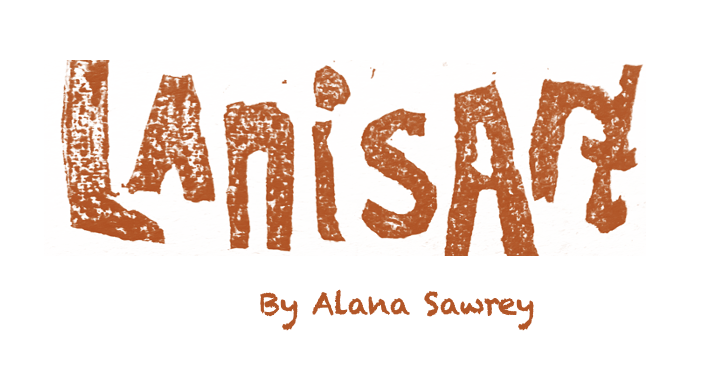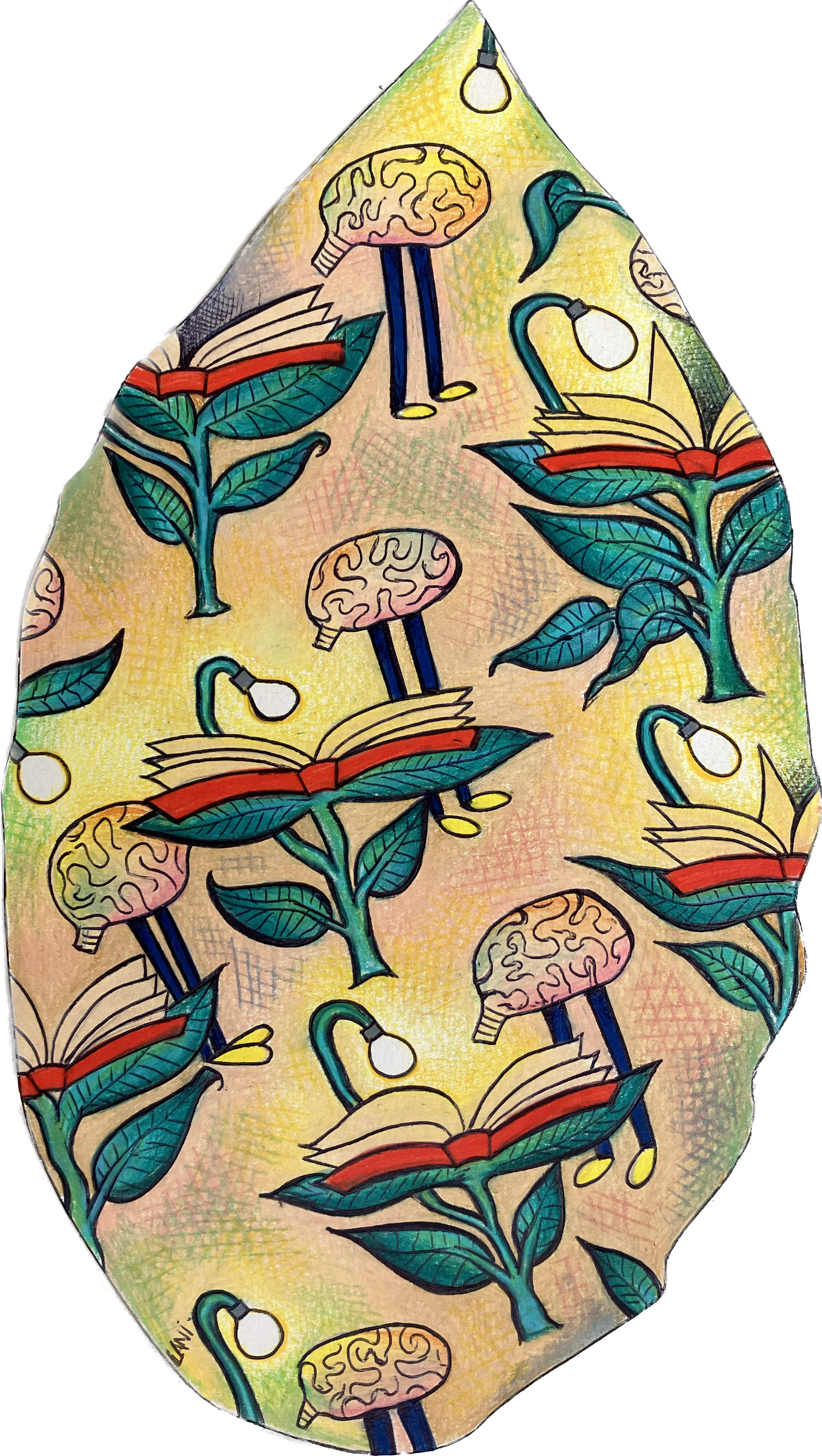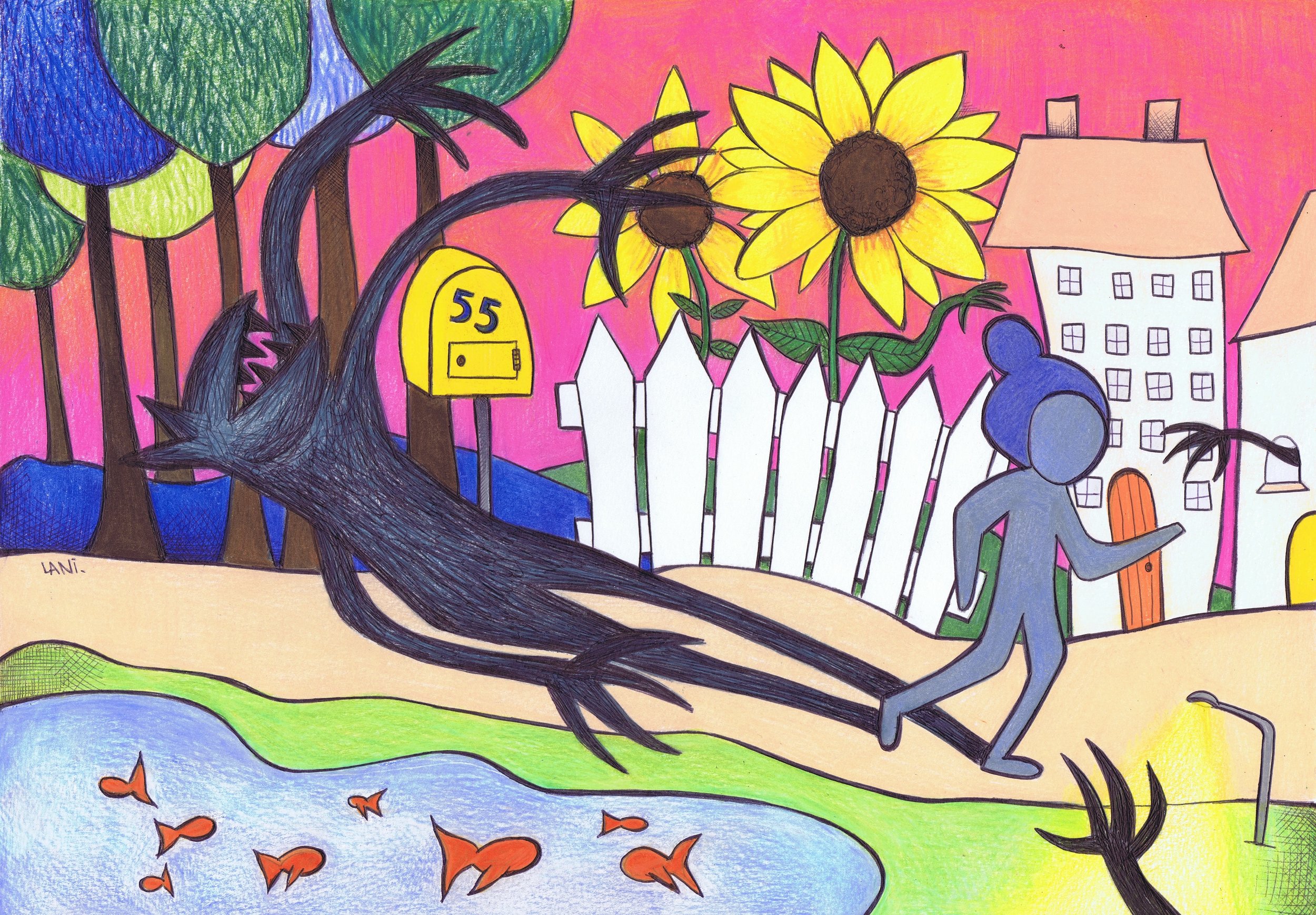Hi all,
It’s been a minute so I am just stopping by to share something cool that’s happened recently.
The QLD Mental Health Commission has just released the 5 year strategic plan to tackle mental health In this state, and 5 artists were commissioned to contribute an artwork and a thought around being well.
This was really exciting to be part of! Here’s a quick snapshot of the artworks in the shape of leaves:
And my leaf:
"This artwork reflects the role that learning plays in keeping myself well and engaged with life.
For me this comes in the form of interesting conversations, listening to podcasts and reading books to widen my perspective and foster my curiosity. It’s also about giving my otherwise busy and anxious mind healthy things to dwell on that are good, true and beautiful."
I wanted to expand a bit more on what I wrote about this artwork.
Firstly, I focussed on learning (reading, conversations, podcasts) as being an important part of keeping well. To want to learn, one must have some curiosity. For me, I am curious about myself, and about humanity in general.
Other areas of curiousity: the lenses people look through to interpret the world around them. How are morals shaped? How is meaning made and applied? Where do people derive their sense of self and what are the consequences of that? How do people understand purpose and live that out? How does any given culture arrives at “norms”?? How important is the human conscience and should we study it to understand it better? (just to start with the light subjects)
Secondly, I mentioned two things: having a busy and anxious mind, and wishing to focus on things that are Good, True and Beautiful (also called the “Transcendentals” which can be traced as far back as Plato and Aristotle, and then Augustine).
My mind goes fast. Really fast. and the AMOUNT of thoughts. Sheesh. I recently sampled to my husband what goes on in my head in a short portion of my day and he said he was exhausted. Haha.
That being said, if I am not careful, my mind churns things over that are not good for me ( I sometimes seek out grimly fascinating things though they never lead me to peace)- not good physically (knots in the stomach anyone?) mentally (more anxiety, feeling drained) or spiritually (inner existential turmoil and a sense of doom and gloom/ sense of despair and disconnect)
There is a replacement to those things, and that is the Good, True and Beautiful (the objective Things That Exist according to our ancient philosophers)
Here’s how I engage with these:
Good- Glimmers of hope that nourish the soul and calm down one’s nervous system. For me, it’s dwelling on The Good- wins at work, positive experiences in my relationships, healthy goals for the future etc etc…
True- My belief is that there is actually absolute truth (therefore that means I reject moral relativism) and the closer I live to the Truth, the healthier my life is in all areas… Therefore dwelling on things that I know to be true- and even knowing that there actually is even such a thing that exists outside of myself that I can get to know- is of great comfort (I am terrible at this Postmodernism thing we’re all supposed to be buying into)
Beautiful- Thinking about art! Marvelling at the skills of the artists I know. Co-creating new things with clients. Witnessing clients create new futures. Dreaming up the next drawing. Listening to a WELL crafted song. Being in nature. Enjoying it when things function the way they are supposed to. When my ears and heart or eyes and heart are happy at the same time (ie hearing music; looking at colours, feeling peace within myself)
We have a degree of control over what we feed ourselves (mentally, spiritually) and what we feed ourselves shapes our outlook and our well-being.
Do you ever have encounters with things that are good, true or beautiful? How do these look for you? Can you make some time to dwell on things of goodness, beauty and truth?
x







